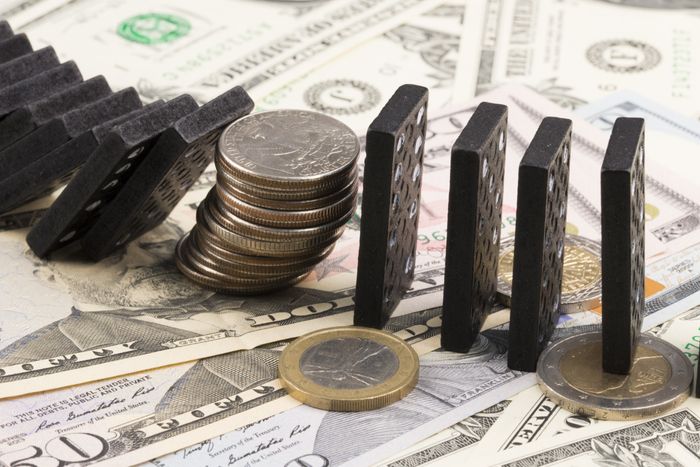The sudden collapse of FTX, the world’s third-largest cryptocurrency exchange, underlines how important it is for any investor to learn about the risks taken when money is parked with a lightly regulated firm.
FTX and affiliate companies filed for bankruptcy Nov. 11. Sam Bankman-Fried resigned his position as CEO and was replaced by John J. Ray III, a lawyer who has worked on the bankruptcies of Enron, Nortel Networks and many other companies.
Bankman-Fried is staying on with FTX “to assist with an orderly transition,” according to a press release:
FTX, based in the Bahamas, held about $16 billion in customer assets but had lent about $10 billion of that to Alameda Research, a trading firm also run by Bankman-Fried and headquartered in Hong Kong, according to a Wall Street Journal report. Alameda, in turn, had lent out billions of dollars, with some secured by FTT, a cryptocurrency created by FTX, according to a Nov. 2 report from CoinDesk.
The value of FTT crashed as FTX faced $5 billion in customer withdrawal requests last weekend, which left FTX facing an $8 billion shortfall, according to Bankman-Fried. Binance, the world’s largest crypto exchange, had said it was selling its $500 million in FTT based on reports of FTX’s loans to Alameda.
In this week’s Distributed Ledger column, Frances Yue rounds up FTX’s collapse, rescue attempts and industry reaction.
Weston Blasi summarizes FTX CEO Sam Bankman-Fried’s shocking claim that he was unaware of FTX’s leverage risk, including an apparent lack of basic financial controls.
More coverage and differing opinions as this story develops:
The rise and fall of Sam Bankman-Fried
Lukas I. Alpert chronicles FTX and Alameda Research founder Sam Bankman-Fried’s rapid rise and the instant collapse of his businesses.
More: Crypto billionaire Sam Bankman-Fried’s net worth could shrink by over $13 billion
What does the crypto crash mean for financial markets’ health?

Riskier financial dominoes fall as excess liquidity dries up.
Getty Images/iStockphoto
MarketWatch’s Need to Know column is an early morning roundup of important areas of concern for investors each trading day.
On Nov. 10, as FTX was quickly coming apart, Thomas H. Kee Jr., CEO of Stock Traders Daily and portfolio manger at Equity Logic, described how a decline in excess liquidity had reversed the runup for cryptocurrencies and riskier stocks. He explained how this might play out in the broader stock market.
He also shared buying opportunities brought about by this year’s declines.
Bitcoin’s volatility may not be as great as you think

Getty Images
Bitcoin
BTCUSD,
itself doesn’t represent the type of risk that FTX and Alameda Research took — accepting a virtual coin as collateral for billions of dollars worth of loans. But it sure is volatile.
On Nov. 10, better-than-expected inflation numbers helped push bitcoin’s price up 11% to $17,524. But then bitcoin was down 6% early Friday to $16,527. At that point, bitcoin was down 64% from the end of 2021. Still, it was up 150% from five years earlier.
So how volatile is bitcoin? Mark Hulbert came to this conclusion, which may surprise you.
What’s really going on with inflation?
Investors were ecstatic after inflation figures for October came in lower than expected, sending broad stock indexes soaring Nov. 10.
As usual, the devil is in the details. Here’s a set of deeper looks at the inflation data:
How to handle company stock if you lose your job

Meta Platforms is in the process of laying off thousands of employees.
Getty Images
This is an uncertain time, even for the largest tech companies that had been growing staff levels steadily for years.
This week Meta Platforms
META,
the parent company of Facebook, began laying off about 11,000 workers. Amazon.com
AMZN,
is reviewing expenses of unprofitable units. The biggest corporate expense is always employees.
Often when an employee is shown the door, they are still holding options in their former employer’s stock. Here’s how to handle that situation.
Semiconductor stocks may have started rebounding

Semiconductor stocks have been roaring back from their mid-October lows.
FactSet
The iShares Semiconductor ETF
SOXX,
tracks the PHLX Semiconductor Index
SOX,
by holding shares of 30 large manufacturers of computer chips or related hardware. The ETF was down 45% for 2022 through Oct. 14, but rose 23% from there, including a 10% increase on Nov. 10.
The post-CPI euphoria may turn out to be another bear market rally, but SOXX now trades for 16.7 times weighted consensus forward earnings estimates among analysts polled by FactSet. That’s lower than the forward P/E of 17.3 for the S&P 500 — this may still be a good point for long-term investors to scoop up semiconductor stocks at attractive prices.
Michael Brush favors this quality approach to selecting semiconductor stocks.
Advice on untangling your finances before retirement
You may have worked hard, and saved and invested for retirement, but have you unwittingly set up a complicated mess that may be difficult to manage? Alessandra Malito has advice on how to organize your finances for retirement.
Read on:
Want more from MarketWatch? Sign up for this and other newsletters, and get the latest news, personal finance and investing advice.



